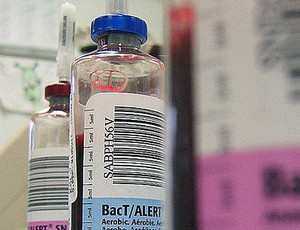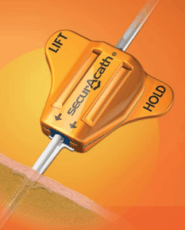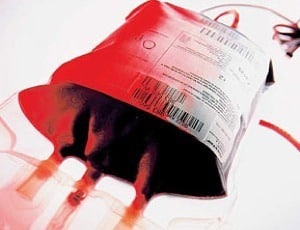Alteplase use in single and double lumen Peripherally Inserted Central Catheters

The aim is to review alteplase use as a marker for peripherally inserted central catheter (PICC) occlusions, which may increase risk of CLABSIs. The discovery that alteplase use increased with the number of PICC lumens allowed for exploration of ordering and placement practices” Byrne and Penwarden (2018). Abstract: The purpose of this article is to […]
BSI rates associated with the use of antimicrobial barrier caps compared with disinfecting caps

In a 13-month, prospective, cluster-randomized, open-label trial, we compared BSI rates in facilities using ClearGuard HD antimicrobial barrier caps (ClearGuard group) with those in facilities using Tego hemodialysis connectors plus Curos disinfecting caps (Tego+Curos group)” Brunelli et al (2018). Abstract: Central venous catheters (CVCs) contribute disproportionately to bloodstream infection (BSI) and, by extension, to infection-related […]
Reducing blood culture contamination using a departmental report card

We hypothesized that departmental level feedback could reduce culture contamination at negligible cost, without unfavourable consequences” Zimmerman et al (2018). Abstract: Approximately 50% of positive blood cultures represent contamination [1,2], requiring additional laboratory resources and resulting in unnecessary treatment and hospitalization days, costing approximately $4,385-$8,720 per contamination in the United States [2–4]. Contamination rate feedback […]
Using central venous pressure to guide fluid management?

The central venous pressure (CVP) is the most frequently used variable to guide fluid resuscitation in critically ill patients, although its use has been challenged” De Backer and Vincent (2018). Abstract: The central venous pressure (CVP) is the most frequently used variable to guide fluid resuscitation in critically ill patients, although its use has been […]
Displacement of a power-injectable PICC following computed tomography pulmonary angiogram

We report a case of iatrogenic PICC line displacement following the power injection of contrast during a computed tomography pulmonary angiogram” Lee and Ricketts (2017). Abstract: Displacement of peripherally inserted central catheter (PICC) lines during contrast-enhanced computed tomography examinations is an underappreciated phenomenon. We report a case of iatrogenic PICC line displacement following the power […]
Comparison between upper arm and chest for totally implanted venous access ports

To evaluate the safety, technical feasibility, and complications of totally implanted central venous access ports (TIVAPs) in the upper arm, for comparison with trans-jugular chest ports in patients with breast cancer” Yang and Ahn (2018). Abstract: BACKGROUND: To evaluate the safety, technical feasibility, and complications of totally implanted central venous access ports (TIVAPs) in the […]
NEOCLOT: NEOnatal Central-venous Line Observational study on Thrombosis

The NEOCLOT study will evaluate the efficacy and safety of the new, national, neonatal CVC-thrombosis guideline. Furthermore, risk factors as well as long-term consequences of CVC-thrombosis will be analysed” Sol et al (2018). Abstract: BACKGROUND: In critically ill (preterm) neonates, central venous catheters (CVCs) are increasingly used for administration of medication or parenteral nutrition. A […]
Efficacy of routine central venous catheter tip cultures in a neonatal intensive care unit

To evaluate the safety of colonized cases without antimicrobial treatment, as well as the effectiveness of routine catheter tip cultures in the neonatal intensive care unit (NICU), we performed a retrospective data analysis in a Japanese community hospital” Kitano et al (2018). Abstract: OBJECTIVES: Although routine catheter tip cultures are not recommended, previous reports have […]
How to predict central line-associated bloodstream infections

The purpose of this study was to compare machine learning techniques for predicting central line-associated bloodstream infection (CLABSI)” Parreco et al (2018). Abstract: PURPOSE: The purpose of this study was to compare machine learning techniques for predicting central line-associated bloodstream infection (CLABSI). MATERIALS AND METHODS: The Multiparameter Intelligent Monitoring in Intensive Care III database was […]
Infusion safety intervention bundle to reduce intravenous medication administration errors
Development and implementation of the intervention bundle was successful at reducing overall and medication error rates, but some errors remained and the potentially harmful error rate did not change” Schnock et al (2018). Abstract: INTRODUCTION: We previously found a high rate of errors in the administration of intravenous medications using smart infusion pumps. OBJECTIVES/DESIGN: An […]
Device for air removal from intravenous infusion lines
In this study, we developed a novel device, vascular access line air removal device (VALARD), and compared its efficiency of air removal and pause time of forward bulk flow with a commonly used device, the Belmont pump” Xu et al (2018). Abstract: Efficient air removal from a vascular access line is a key step to […]
Therapeutic antibiotic serum concentrations by two blood collection methods

The primary objective of this study was to assess agreement between serum tobramycin/vancomycin concentrations collected from a CVC or PIV, versus venipuncture or fingerstick” Lichliter et al (2018). Abstract: Repeated venipunctures and fingersticks to confirm serum drug concentrations cause pain and dissatisfaction for pediatric patients and their families. In many organizations, the standard of care […]
Catheter-associated venous air embolism in hospitalized horses

Our objective was to describe the surrounding circumstances, clinical signs, treatment, progression, and outcome of venous air embolism in hospitalized horses” Parkinson et al (2018). Abstract: BACKGROUND: Venous air embolism is a potentially life-threatening complication of IV catheter use in horses. Despite widespread anecdotal reports of their occurrence, few cases have been reported in the […]
Cryoprecipitate transfusions in the neonatal intensive care unit

The objective of this study was to determine if a change in cryoprecipitate transfusion policy impacts donor exposure and fibrinogen level in a neonatal intensive care unit (NICU) population” Tkach et al (2018). Abstract BACKGROUND: The objective of this study was to determine if a change in cryoprecipitate transfusion policy impacts donor exposure and fibrinogen […]
Study suggests SecurAcath saves time during dressing change

Use of SecurAcath saves time during dressing change compared with StatLock. Training on correct placement and removal of SecurAcath is critical to minimise pain” Goossens et al (2018). Abstract: Objectives: To assess the effect on needed nursing time for dressing change. Design, setting, participants: A parallel-group, open-label, randomised controlled trial in patients who are in […]
Sternal intraosseous access for fresh whole blood transfusion

In this study we have challenged this statement by looking at flow rates of autologous fresh whole blood reinfusion and hemolysis using two of the commonly used FDA-approved and CE-marked sternal needles” Bjerkvig et al (2018). Abstract: BACKGROUND: Intraosseous (IO) vascular access is increasingly used as an emergency tool for achieving access to the systemic […]
Risk factors of extravasation of peripheral intravenous catheters in neonates and children

Extravasation was frequent and neonates were particularly at risk. Younger age and longer in situ PIVC duration were independent risk factors for extravasation” Fonzo-Christe et al (2018). Abstract: AIM: Epidemiological data on the incidence and risk factors of extravasation of peripheral intravenous catheters (PIVC) in neonates and children are scarce and that is what this […]
Educational program for decreasing catheter-related bloodstream infections

This study aimed to determine whether an educational program could reduce the rate of catheter-related bloodstream infections (CRBSIs) in intensive care units (ICUs)” Shimoyama et al (2018). Abstract: BACKGROUND: Central venous catheters (CVCs) are commonly used in the management of critically ill patients. This study aimed to determine whether an educational program could reduce the […]
Complication rates of tunneled femoral venous catheter placement
Femoral tunneled central line placement in the pediatric population offers an alternative means for intravenous (IV) access, but there is concern for higher complication and infection rates when placed at bedside” Chau et al (2018). Abstract: BACKGROUND: Femoral tunneled central line placement in the pediatric population offers an alternative means for intravenous (IV) access, but […]
Inadvertent central arterial catheterization results in ischemic stroke

We present a patient with an acute ischemic stroke from an inadvertently placed CVC into the right common carotid artery” Katyal et al (2018). Abstract: Central venous catheter (CVC) insertion is extensively utilized in Intensive Care Units for evaluation of hemodynamic status, administration of intravenous drugs, and for providing nutritional support in critically ill patients. […]
Simulation-based mastery learning curriculum for CVC insertion skills

In this study, the authors compared the results of traditional Angoff and Hofstee standard-setting exercises with the Mastery Angoff and Patient-Safety approaches for central venous catheter (CVC) insertion skills examinations” Barsuk et al (2018). Abstract: PURPOSE: Defensible minimum passing standards (MPSs) must be used to evaluate learner performance outcomes in health professions education. In this […]
Is prophylactic platelet transfusion prior to central venous catheter placement?

This is the first prospective, randomised controlled trial powered to test the hypothesis of whether omitting forgoing platelet transfusion prior to central venous cannulation leads to an equal occurrence of clinical relevant bleeding complications in critically ill and haematologic patients with thrombocytopenia” van de Weerdt et al (2018). Abstract: BACKGROUND: Severe thrombocytopenia should be corrected […]
Continuous peripheral infusion of 3% sodium chloride injection and phlebitis rates in adults

One institution’s experience with use of peripheral i.v. (PIV) catheters for prolonged infusions of 3% sodium chloride injection at rates up to 100 mL/hr is described” Meng et al (2018). Abstract: Purpose: One institution’s experience with use of peripheral i.v. (PIV) catheters for prolonged infusions of 3% sodium chloride injection at rates up to 100 […]
Stability and chemical characteristics of injectable ascorbic acid for patients with cancer
The current research team has evaluated its effectiveness in patients with cancer as part of an ongoing research program. However, no data are available that support the chemical stability of intravenously injectable ascorbic acid (AA) to ensure its safety and efficacy in that patient population” Monti et al (2017). Abstract: Context: Intravenous ascorbic acid (IVAA) […]
Development and implementation of an antimicrobial lock therapy guideline

Overall, implementation of a guideline on administration of antimicrobial lock therapy was successful. Nine patients received antimicrobial lock therapy in the 18 months after policy implementation; although 2 had their line removed (1 due to repeated line infections), neither required line replacement” Zembles et al (2018). Abstract: Purpose: The development and implementation of an antimicrobial […]
Case review describes double superior vena cava

Double SVC can be fortuitously discovered during catheter insertion, thoracic or cardiac imaging and surgery. In most cases it drains into the right atrium, through the coronary sinus” Farazi-Chongouki et al (2018). Abstract: INTRODUCTION: Various anomalies in the development of the great thoracic veins of the embryo can be incidentally discovered in the normal adult. […]
Safety and efficacy of Rituximab described in this article
Patient characteristics, safety, and efficacy measures are reviewed to ascertain the therapeutic benefit and safety of RTX in a real-world setting with long-term follow-up” Alldredge et al (2018). Abstract OBJECTIVES: Multiple sclerosis (MS) is an immune-mediated disease of the central nervous system. B cells play an important pathogenic role in MS. Rituximab (RTX), a B-cell […]
CLABSI risk factors in children receiving home parenteral nutrition

This study aimed to (1) characterize the incidence, clinical presentation, and epidemiology of CRBSIs and (2) identify risk factors for CRBSIs in children receiving home parenteral nutrition” Wozniak et al (2018). Abstract: BACKGROUND: Few studies have examined the epidemiology and risk factors for the development of outpatient-acquired catheter-related bloodstream infections (CRBSIs) in children receiving home […]
Central line insertion and complication rates in the UK population

This study demonstrates the ease and feasibility of collecting detailed descriptive data on central line insertion and its immediate complications in the UK over two weeks” Wong et al (2018). Abstract: BACKGROUND: Central venous catheters are inserted ubiquitously in critical care and have roles in drug administration, fluid management and renal replacement therapy. They are […]
Prevalence and economic burden of medication errors in the NHS in England
This project aims to summarise the evidence on the burden of medication error, namely the number of errors occurring in the NHS in England, the costs of those errors to the NHS and the health losses due to medication error” Elliott et al (2018). Abstract: Medication errors may cause harm, including death, and increase use […]

